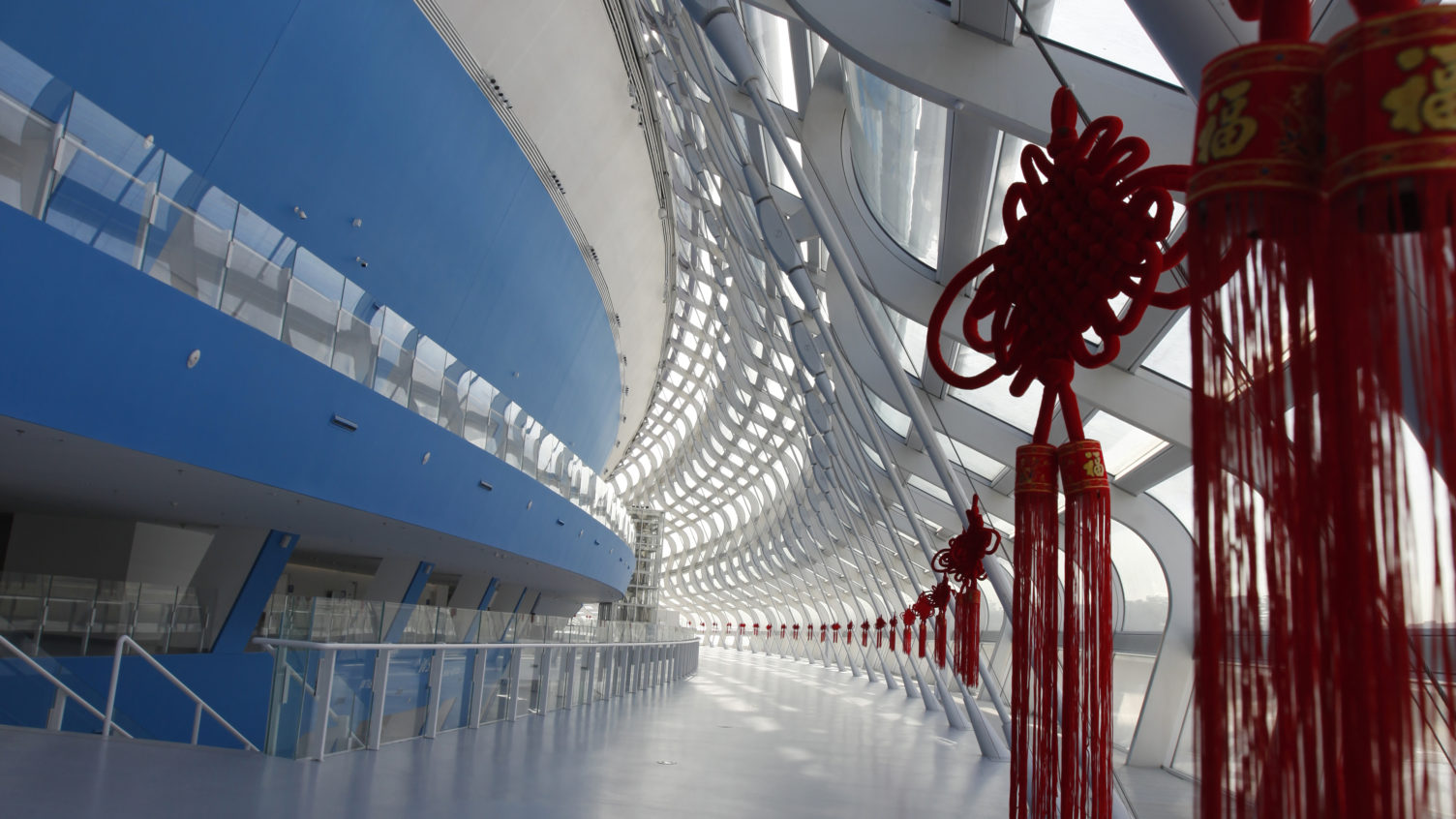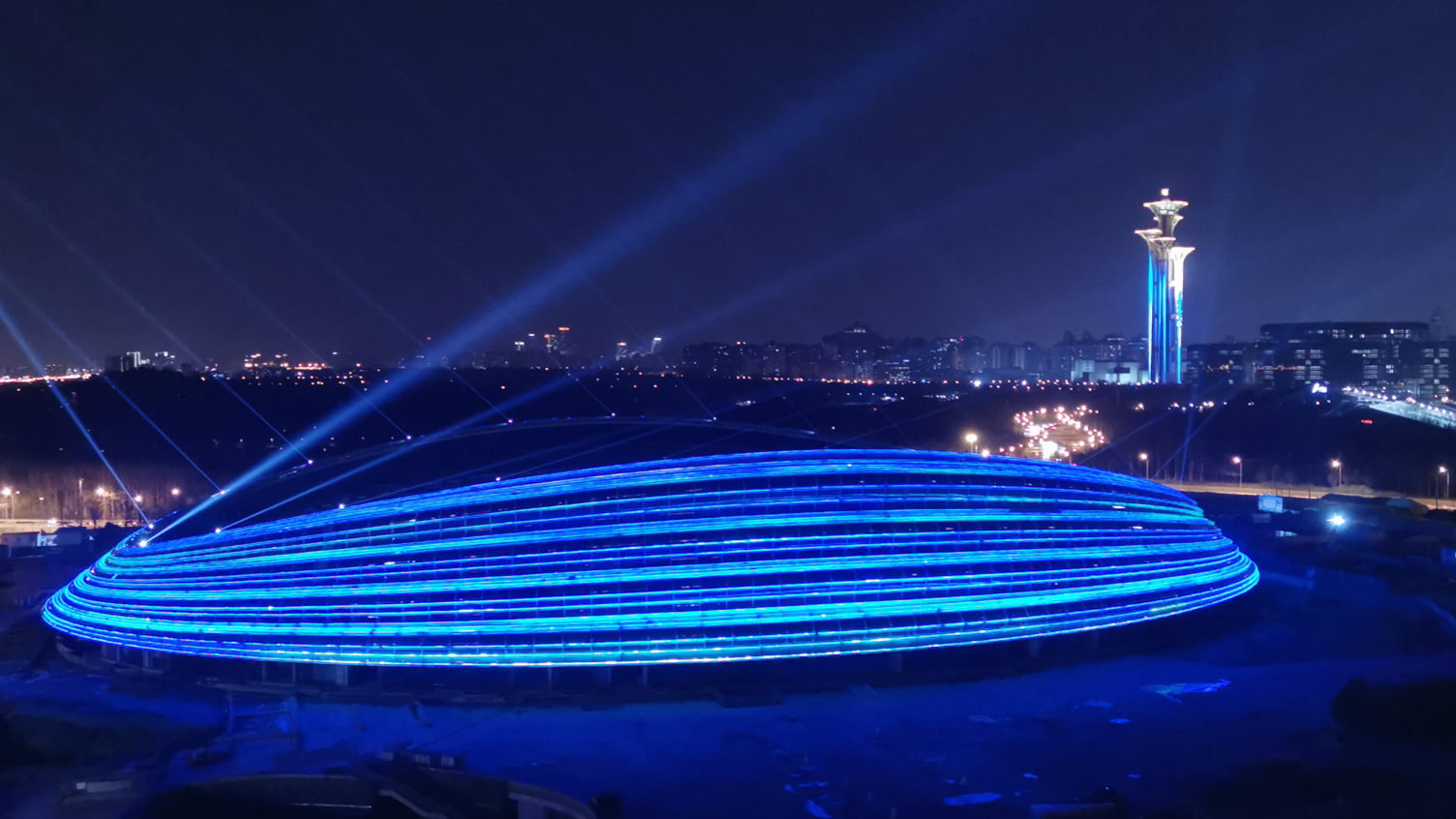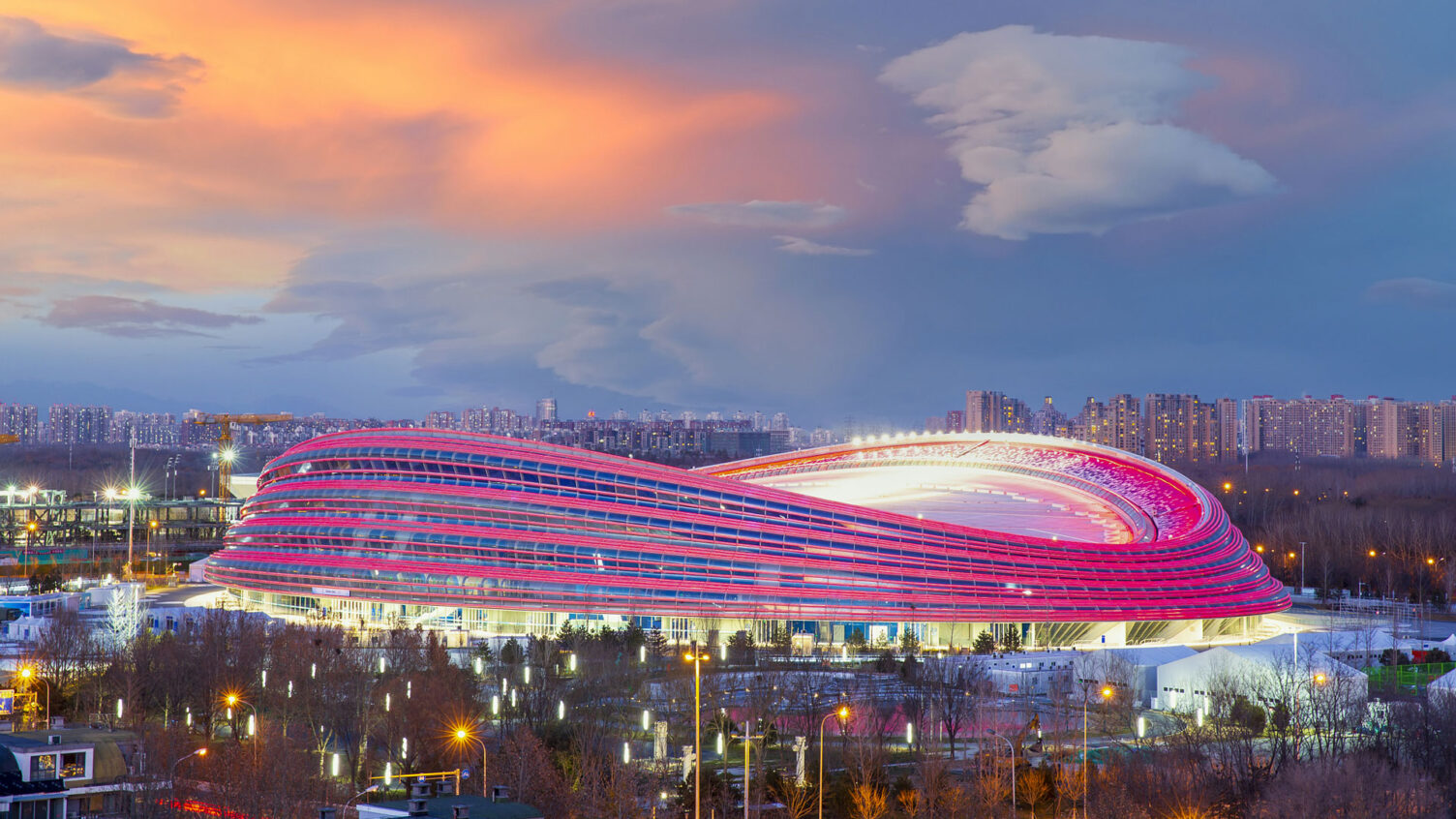The ‘Ice Ribbon’ Forged from Culture, Design And Sport
February 3, 2022
-
Categories
As the Olympic flame heats up and the spotlight is placed on the athletes of the 2022 Winter Games, fascination begins to grow around the Olympic venues that will host the pinnacle of international sports competition.
The showcase for any Olympic host city is often the main stadium.
It is a symbol of cultural heritage and is responsible for projecting massive amounts of energy to billions of viewers tuned in, to the thousands of spectators experiencing it live (pre-pandemic restrictions) and for the athletes and officials competing in it.
The next host of the biggest sporting spectacle is the world’s first dual Olympic city, Beijing, when the 2022 Winter Olympics begin this February.
Legacy venues from the Beijing 2008 Summer Games, the ‘Bird’s Nest’ and the ‘Water Cube’ will host a variety of Winter events as a sustainable reuse of existing Olympic venues.
The only new permanent venue built for Beijing 2022 is the National Speed Skating Oval (NSSO) or the ‘Ice Ribbon’ which will be the main venue for the speed skating competition and will provide a community sport and training venue after the Games.
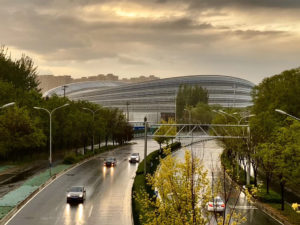
Designed as a new landmark arena for Beijing, the ‘Ice Ribbon’ was designed by global sports architecture firm, Populous and is their fourth Olympic stadium.
Working within the Asia-Pacific region for over 25 years is Populous’ Senior Principal and Director Andrew James who was Chief Architect and co-Project Director on NSSO.
James said to be selected as the chief designer of an Olympic sports venue is a huge honour.
“To have the opportunity to work with your client and their stakeholders to showcase a host city’s culture through design is fascinating work.
“The architecture of the main stadium is a rare chance to engage with the world and deliver an impact by crafting a compelling design story and creating true legacy value post-Games.
“It is crucial to research and uncover the culture, behaviour and desires of the local people to ensure the legacy design of the stadium has a continuing impact,” James said.
The Populous team, spread across five countries and three offices, worked with the wider design team to complete the international competition winning design of NSSO’s ‘Ice Ribbon’.
“As a global company, our expertise is distributed all over the world, providing a connection channel to bring our best to every project.
“That’s what I would call the common DNA that runs through every Populous project.
“We really focus on what happens inside that building and how that building relates to the external environment around it.
“We create great spaces for people to come together and celebrate amazing events and experiences,” James said.
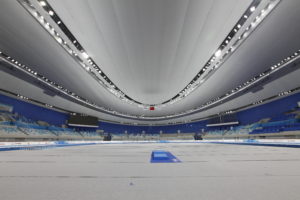
While every Olympic city’s history is different and the way people behave is different, the design that goes into a venue must connect a city, the country or the region around it.
“Connections between the venue and its intended use by the community improve the quality of life for people and are really important for these large pieces of public infrastructure.
“It needs to offer something distinct and authentic to its local context. It also needs to meet all the requirements for its purpose, in this case for NSSO it includes international speed skating and IOC requirements,” James explains.
The design of NSSO was forged through several concepts and many iterations from childhood memories of co-Project Director, Tiric Chang, to create a beautiful interpretation of Chinese culture and heritage.
“Much of the inspiration for the conceptual design for the ‘Ice Ribbon’ came from a traditional ice game played in old Beijing which involved a high-speed spinning ‘ice top’,” Chang explains.
“The floating silk ribbons were inspired from a past memory of watching my family’s dedication to the study and preservation of the Dunhuang Grottoes, a significant collection of Buddhist art from the Tang dynasty.
“The spinning concept of ice and ribbons took its final form in the NSSO ‘Ice Ribbon’ which illustrates the speed and rotation of the events within.
“At night, the façade of the NSSO creates an exciting spectacle, with each of the strands becoming dynamic ribbons of light that change to an endless array of lighting programs,” Chang said.
Populous has been involved in 14 Olympics, both summer and winter, in all facets of the Games helping cities to prepare their bids including their post event legacy modes; developing comprehensive sporting and city-wide building master plans; designing temporary event ‘overlay’ facilities to meet the needs of officials, medical, broadcasters and spectators; right through to the design of world class permanent venues.
In the lead up to, and during the Games, NSSO will be the home of training for speed skating events and Olympic competition.
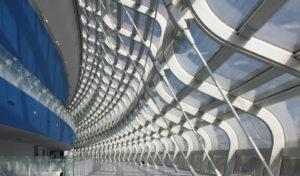
Following the Games, the design’s legacy allows the transformation of the facility to serve its long-term purpose as a real hub for the community, to hold Winter festivals, public ice skating, ice hockey or private ice-based shows and events.
This legacy design will support the Chinese Central Government’s Ice and Snow Sports Development Plan which aims to involve 300 million people in ice and snow sports by 2025 and is in line with the IOC’s philosophy to ensure there is a real ‘cost-benefit’ associated with hosting the Games.
